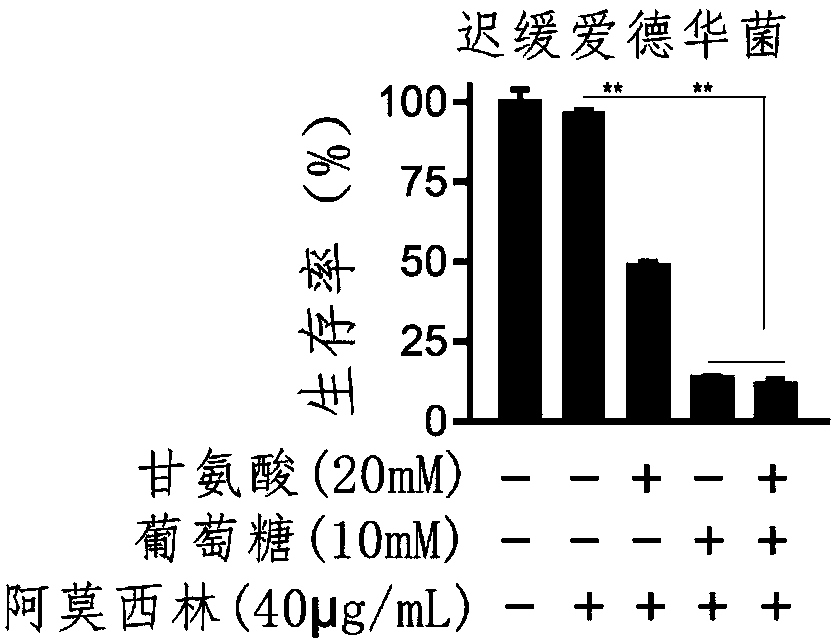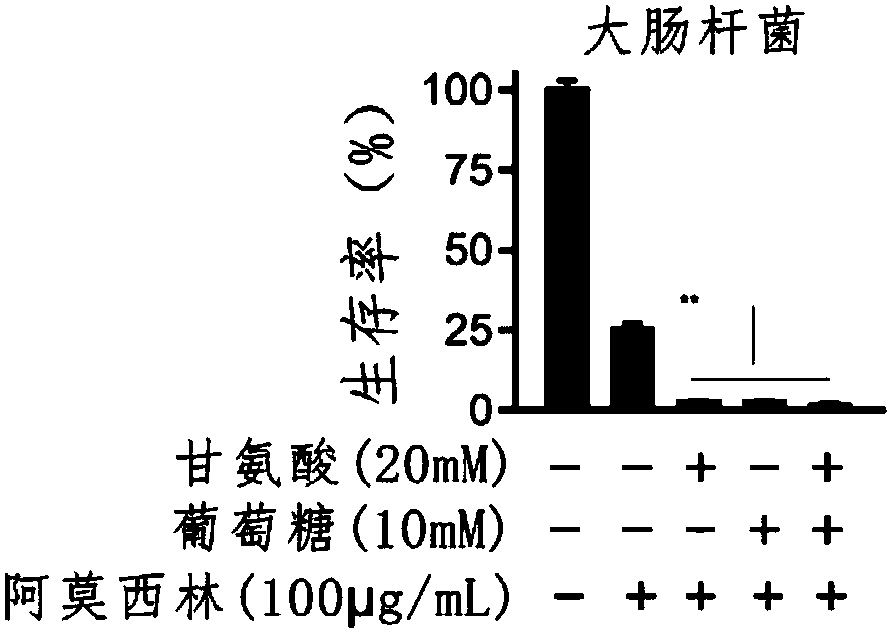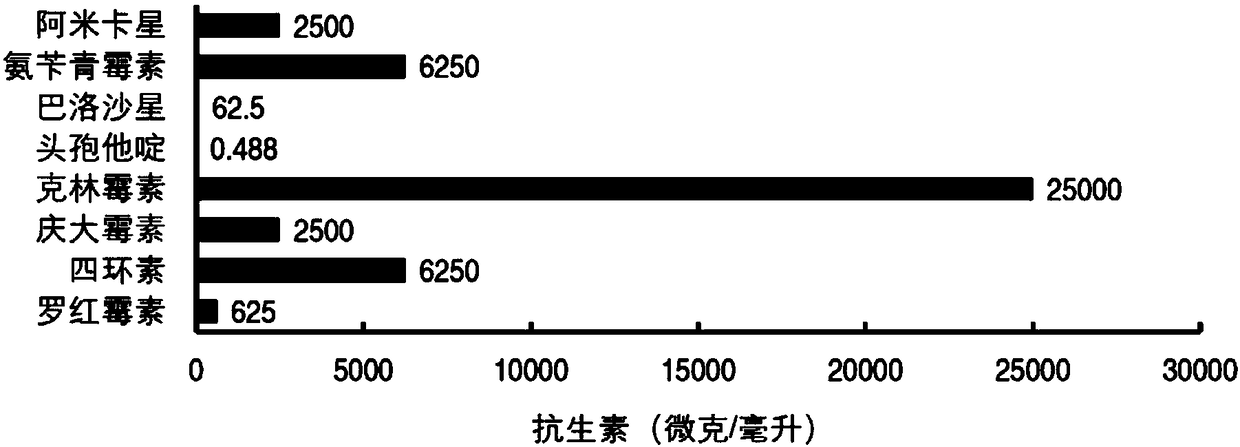Preparation jointly using glycine and amoxicillin
A technology for amoxicillin and amoxicillin sensitivity, applied in the direction of medical preparations containing active ingredients, resistance to vector-borne diseases, organic active ingredients, etc.
- Summary
- Abstract
- Description
- Claims
- Application Information
AI Technical Summary
Problems solved by technology
Method used
Image
Examples
Embodiment 1
[0025] Determination of drug resistance of Edwardsiella tarda EIB202
[0026] Edwardsiella tarda is a Gram-negative short bacillus. It was first reported by Hoshina (1 96 2a), and it is related to reddisease of Japanese eel. From the first report to now, the fungus has caused diseases in more than 20 kinds of fish, such as eel, flounder, tilapia, Chinese soft-shelled turtle, carp, etc., causing huge losses to aquaculture. Edwardsiella tarda is also a common pathogenic bacteria in humans and fish, which directly poses a threat to human health.
[0027] Firstly, the minimum inhibitory concentration of Edwardsiella tarda to various antibiotics was determined. The results showed that the minimum inhibitory concentration of Edwardsiella tarda EIB202 to ampicillin was 3.12 μg / mL, the minimum inhibitory concentration to kanamycin was 12.5 μg / mL, and the minimum inhibitory concentration to tetracycline was 125 μg / mL. The minimum inhibitory concentration of chloramphenicol was 50μg / ...
Embodiment 2
[0029] Glycine and / or glucose increase susceptibility to amoxicillin in Edwardsiella tarda
[0030] Preparation of test samples: Pick a single colony of Edwardsiella tarda EIB202 from the LB plate and inoculate it in 5mL of LB medium, shake and culture at 200rpm at 30°C for 24h to reach saturation. Collect the bacterial liquid by centrifugation, centrifuge at 8000rpm for 5min, remove the supernatant and wash the bacterial cells with 0.85% normal saline, and finally suspend the bacterial cells with 1×M9 (containing 10mM acetate), adjust the OD value of the bacterial solution to 0.2, and then pack them separately 5mL in a test tube for later use.
[0031] The prepared samples were divided into 5 groups, of which 2 groups were the control group, which were without adding any substances and adding amoxicillin; the other 3 groups were the experimental group, in the case of adding amoxicillin, adding glycine, glucose, Glycine and Glucose. After incubating in a shaker at 30°C and 2...
Embodiment 3
[0033] Glycine and / or glucose increase susceptibility to amoxicillin in Escherichia coli and its Escherichia coli clinical strains
[0034] (1) Glycine and / or glucose can increase the sensitivity of Escherichia coli to amoxicillin
[0035] Preparation of test samples: Pick a single colony of Escherichia coli from the LB plate and inoculate it in 5mL of LB medium, shake and culture at 200rpm at 37°C for 16h to reach saturation. Collect the bacterial liquid by centrifugation, centrifuge at 8000rpm for 5min, remove the supernatant and wash the bacterial cells with 0.85% normal saline, and finally suspend the bacterial cells with 1×M9 (containing 10mM acetate), adjust the OD value of the bacterial solution to 0.2, and then pack them separately 5mL in a test tube for later use.
[0036] The prepared samples were divided into 5 groups, of which 2 groups were the control group, which were without adding any substances and adding amoxicillin; the other 3 groups were the experimental ...
PUM
 Login to View More
Login to View More Abstract
Description
Claims
Application Information
 Login to View More
Login to View More - R&D
- Intellectual Property
- Life Sciences
- Materials
- Tech Scout
- Unparalleled Data Quality
- Higher Quality Content
- 60% Fewer Hallucinations
Browse by: Latest US Patents, China's latest patents, Technical Efficacy Thesaurus, Application Domain, Technology Topic, Popular Technical Reports.
© 2025 PatSnap. All rights reserved.Legal|Privacy policy|Modern Slavery Act Transparency Statement|Sitemap|About US| Contact US: help@patsnap.com



